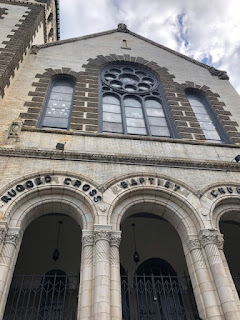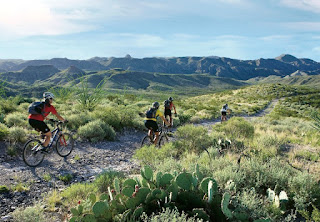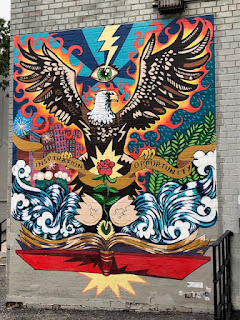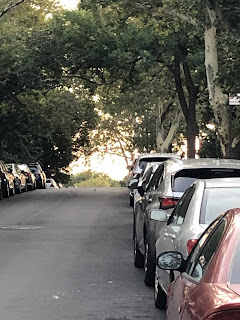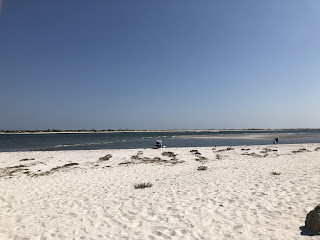Today I took a ride into New Jersey for the first time, I think, since the pandemic began. I know, that sounds odd, considering how often I’ve pedaled to Connecticut. But I finally got up the courage to board the ferry—which, much to my surprise, was nearly empty—to Jersey City.
I’d forgotten just how odd and interesting parts of the city are. In Journal Square stands this monument to one of the icons, not only of sports, but also of racial equality and human rights:
Jackie Robinson is one athlete I wish I could have seen in his prime. What I learned from looking at this sculpture, though, is the emotions he tried not to show, and the ones that he couldn’t help but to reveal.
Sporting events at their best are theater, or at least dramatic. So, perhaps, it’s not surprising to see this theatre across Kennedy Boulevard:
It’s long fascinated me that during the 1920s, when movies first reached mass audiences and studios built towering, cavernous shrines to them, Art Deco and a fascination for all things Egyptian defined the visual style of the time just as jazz was its soundtrack. Looking at buildings like the Loew’s Jersey, though, shows me how congruent those things were: the lines and shapes of Art Deco building details and Egyptian carvings mirror each other as much as they echo the tempo changes of the era’s best music.
So a theater stands across from a monument to a man who played out one of this country’s real-life dramas. To his right, across Pavonia Avenue, stands another former movie theater:
Like many other former cinematic cathedrals, it’s become a house of worship. That makes sense, as the interior dimensions of those old movie houses closely resemble theaters. And when you come down to it, a mass or service is a kind of theatrical performance—just like a ball game or bike race.
And I got to see the theater of the street from my bike.




















